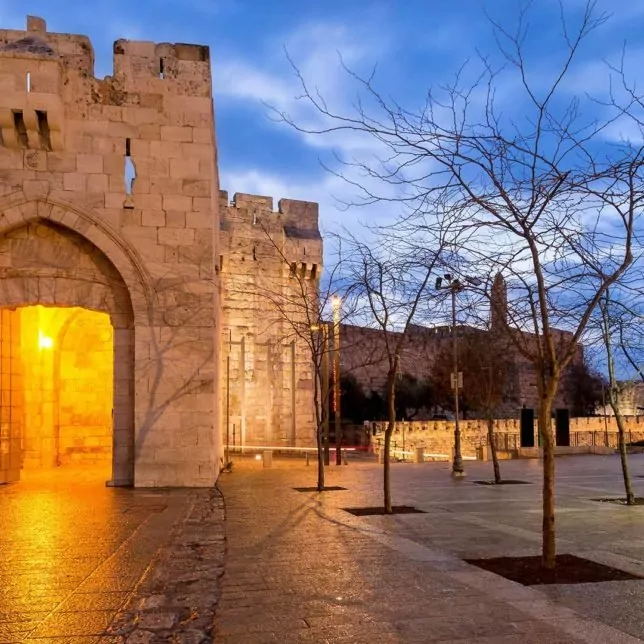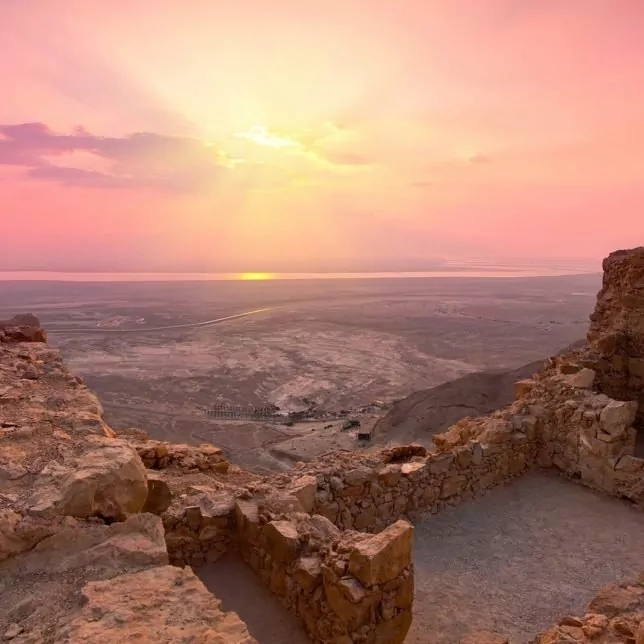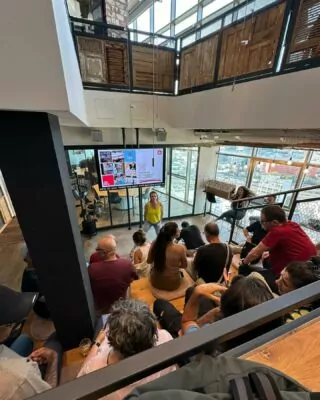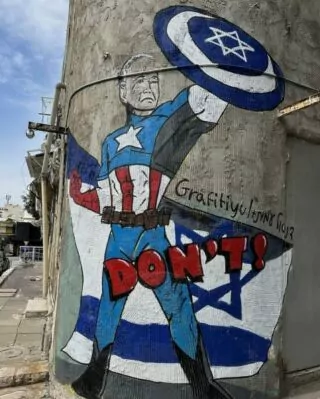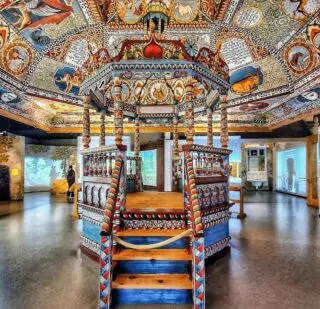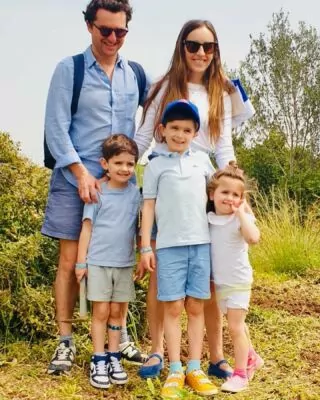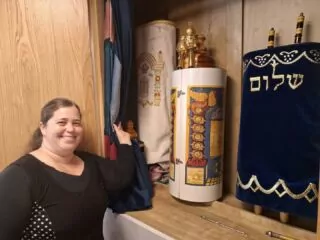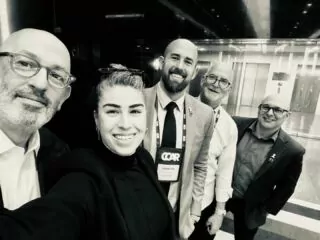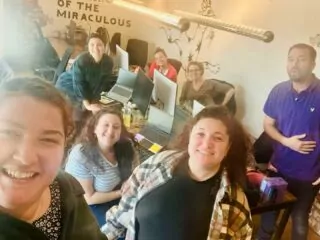- Jewish timeline
- General timeline
EARLY HISTORY
- 3000 A society of hunter-gatherers and farmers. Dolmen tombs built.
250 Area inhabited by Germanic and Celtic tribes.
59 Roman Empire conquers area south of the River Rhine.
- 490 CE Northern Netherlands controlled by Frisians, the south by Franks.
500 Conversion to Christianity begins.
768 Charlemagne, Frankish king and the first Holy Roman Emperor, rules Western Europe including Netherlands.
Dutch language begins to evolve and separates from Old Frankish language.
814 Charlemagne dies and his empire declines.
The little kingdoms: No central authority as fortified towns and areas are ruled by a large number of feudal lords.
A FRAGILE EXISTENCE
- 1100 Feudal system declines as cities grow.
- 1300 First record of Jewish communities in present-day Netherlands.
- 1347 Black Death devastates Europe, including Netherlands.
- Jews held responsible, leading to expulsions and persecution.
THE REFORMATION AND REBELLION
- 1419 Most of the Netherlands ruled by Duke of Burgundy.
- No (or very few) Jews live in Netherlands.
- 1466 Birth of Erasmus, great Dutch humanist and key Renaissance thinker.
1517 Protestant Reformation begins, spreading to Netherlands.
1566 Protestant Calvinist rampage destroys Catholic church art and religious imagery.
Brutal retaliation launched by Philip II of Spain, Catholic King of the Habsburg Empire.
1568 Dutch War of Independence against Spanish Habsburg rule begins.
- Small Jewish community develops, especially in city of Nijmegen.
- 1588 Netherlands effectively independent from Spain and under Protestant monarch.
THE DUTCH GOLDEN AGE
- 1602 Dutch East Indies Company, the world’s largest trading company, formed.
Netherlands an economic, scientific, and cultural power and the “first capitalist nation.”
Dutch establish colonies including in Manhattan and the Spice Islands (Indonesia).
- Influx of Portuguese Jews and conversos, especially to Amsterdam.
Sephardi Jews play vital role in Dutch economy and international trade.
1608 Growth of smaller Jewish communities in Rotterdam, the Hague, and elsewhere.
1619 Dutch leave all questions regarding rights of Jews to individual cities.
Most cities welcome Jews, providing unusual degree of tolerance and freedom.
1620 Beginnings of Amsterdam’s Ashkenazi Jewish community.
- 1637 Dutch involvement in slave trade begins.
1648 End of the Eighty Years’ War as Spain recognizes the Dutch Republic.
- 1656 Philosopher Baruch Spinoza excommunicated by Jewish community.
- 1657 Rembrandt, who lived in the Jewish Quarter, paints the “Jewish Bride.”
- Jewish communities largely govern themselves.
Ashkenazi community, Yiddish speaking, poorer and less integrated than Sephardim, grows.
Impressive synagogues built including the Snoga (Portuguese).
- 1672 The Disaster Year: France, supported by England and others, attack Netherlands.
Dutch decline begins.
A SMALL, MODERN NATION
- 1750 The Dutch are no longer a major world power.
Serious economic instability.
- 1796 The Netherlands becomes a puppet state of France.
1796 Jews technically granted emancipation but little political integration.
Jews continue to be mainly governed by their local Kehila or Jewish council.
Jewish economic decline deepens.
1800 54 percent of Jews survive through charity.
- 1814 The Kingdom of Netherland regains independence.
Industrialization and economic recovery.
- Jewish prosperity and political integration grow.
Jewish communal affairs increasingly regulated by state.
Jewish schools legally required to provide secular, Dutch-language education.
- 1830 Belgium splits from the Netherlands and forms an independent nation.
1863 Netherlands becomes last European country to abolish slave trade.
- Orthodoxy weakens, as does Yiddish language among Ashkenazim.
Growing Jewish middle class.
- 1914 The Netherland stays neutral during World War One.
1919 Zuiderzee Works, a massive dam and land reclamation project, begins.
Rotterdam becomes one of the world’s great ports.
Innovative social welfare programs launched.
1929 Great Depression particularly harsh in the Netherlands. - First Liberal synagogue established.
WORLD WAR TWO AND THE HOLOCAUST
- 1939 Netherlands declares neutrality in World War Two.
- Jewish population c. 1400,000.
Jewish refugees flee to Netherlands from Nazi Germany.
Dutch government establishes Westerbork camp for Jewish refugees. - 1940 Nazi German invades, Rotterdam heavily bombed.
The Velvet Glove: German occupation for most Dutch is relatively mild.
- Anti-Jewish laws immediately passed.
- 1941 End of the Velvet Glove: German occupation harshens.
Dutch workers strike in protest at deportation and persecution of Jews. - Germans, with Dutch collaborators, increase Jewish segregation in response.
1942 All Dutch Jews ordered to move to Amsterdam.
Stateless Jews interned at Westerbork, now a transit point to the death camps.
Jews forced to wear yellow stars.
25-30,000 Jews go into hiding.
1943 Mass deportations to Auschwitz, Sobibor, and elsewhere increase.
- 1944 Allied forces liberate south of country but most of country remains under Nazis.
- Anne Frank and family discovered and deported.
Last train from Westerbork to Auschwitz.
- The Hunger Winter: mass starvation after Germans cut off Dutch food supply.
1945 Canadian force liberate Netherlands.
- Only 5,200 Jews survive the war.
More than 75% of Dutch Jews perished during Holocaust. - 1945 Poverty and hardship after war.
Dutch try to regain control over Indonesia.
- 1946 Jewish population 30,000 with return of some who fled country during war.
1947 Netherlands votes in favor of UN Partition plan in Palestine.
- 1948 Dutch acknowledge Indonesian independence after costly war.
Marshall Plan: Massive US economic assistance to Europe including Netherlands.
1950s An economic miracle: Netherlands part of western Europe’s economic recovery.
- Jewish population declines to 25,000 with emigration to Israel.
1967 Ivo Samkalden becomes first Jewish mayor of Amsterdam.
- 1968 Amsterdam a center of hippie movement. Use of soft drugs tolerated.
2001 Netherlands becomes first country with marriage equality for same sex couples.
2002 Murder of Pim Fortuyn, anti-immigrant, anti-Islam politician.
- 2012 Amsterdam’s Jewish Cultural Quarter established.
- Today Population of Netherlands: 17.3 million.
Country ranks highly for prosperity, quality of life and freedom.
- Jewish population: 25,000.
J2 STUFF.
We have everything you need to know before you go. Check out our Instagram my_j2adventures for cool updates and interesting tidbits.
The J2 App
available on the App Store & on Google Play.

START PLANNING LET’S EXPLORE.
Whether you have a journey in mind, want to join a featured trip, or simply want to explore, drop us a note. We work really hard to be a loved travel company that delivers amazing and memorable experiences. So please do not be surprised when we say “yes” to every reasonable request you make!
